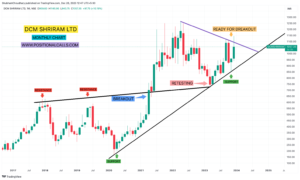The State Bank of India (SBI), the country’s largest lender, has reported a marginal increase in its net profit for the first quarter of the fiscal year 2024-25, amounting to Rs 17,035 crore. This performance reflects the bank’s resilience amid a challenging economic landscape and highlights its strategic initiatives to enhance profitability and operational efficiency. This blog will discuss the primary forces behind SBI’s performance, the implications for investors, and the general state of the market.
SBI Q1 Results: Financial Highlights
SBI’s Q1 results indicate a growth trajectory, with a year-on-year increase in net profit, showcasing the bank’s ability to navigate through economic uncertainties. The bank’s net interest income (NII) also saw a substantial rise, driven by increased lending and improved asset quality:
- Net Profit:
₹17,035 crore (up from ₹16,000 crore in Q1 FY24) - Net Interest Income:
Increased by 15% to ₹36,000 crore. - Gross NPA Ratio:
Reduced to 3.5%, indicating improved asset quality
These figures reflect SBI’s robust business model and its focus on maintaining a healthy balance sheet, which is crucial for sustaining growth in the competitive banking sector.
SBI Q1 Results: Factors Driving Profitability
- Strong Loan Growth:
SBI has experienced significant demand for loans across various sectors, including retail, agriculture, and corporate lending. The bank’s strategic focus on expanding its loan book has contributed to the increase in net interest income. - Improved Asset Quality:
The reduction in the gross non-performing assets (NPA) ratio highlights SBI’s effective risk management practices. The bank’s proactive approach to identifying and addressing potential defaults has resulted in a healthier loan portfolio. - Cost Management Initiatives:
SBI has implemented several cost-control measures, resulting in improved operational efficiency and reduced overhead costs. This has allowed the bank to maintain healthy margins despite a competitive interest rate environment. - Digital Transformation:
The bank’s investment in digital banking solutions has enhanced customer experience and streamlined operations. This digital shift has attracted a younger demographic, contributing to an increase in transaction volumes and customer engagement.
SBI Q1 Results: Market Implications
SBI’s strong performance in Q1 is a positive indicator for the banking sector as a whole. As the largest lender in India, SBI’s results often set the tone for other banks. A healthy SBI can lead to increased investor confidence in the banking sector, potentially driving up stock prices across the industry.
- Investor Sentiment:
The marginal increase in profit may lead to a bullish sentiment among investors, encouraging them to consider SBI as a stable investment option amid market volatility. - Stock Performance:
Following the announcement of its Q1 results, SBI’s stock may experience upward momentum, attracting both institutional and retail investors looking for exposure to the banking sector. - Sectoral Growth:
SBI’s performance may also encourage other banks to adopt similar strategies, leading to overall growth in the banking sector, which is crucial for the Indian economy’s recovery and growth.
READMORE: Ola Electric Mobility IPO: Powering the Future of Electric Vehicles in India
Conclusion
SBI’s marginal increase in net profit to ₹17,035 crore for Q1 FY25 underscores the bank’s resilience and strategic focus on growth. With strong loan demand, improved asset quality, and effective cost management, SBI is well-positioned to capitalise on future opportunities in the banking sector. SBI offers investors a promising opportunity because it combines stability with room for expansion. As the bank continues to innovate and adapt to changing market conditions, it remains a key player in India’s financial landscape. Stay informed about SBI and other market trends by following our updates at Positional Calls, where we provide expert stock recommendations, IPO details, and the latest news to help you make informed investment decisions.













